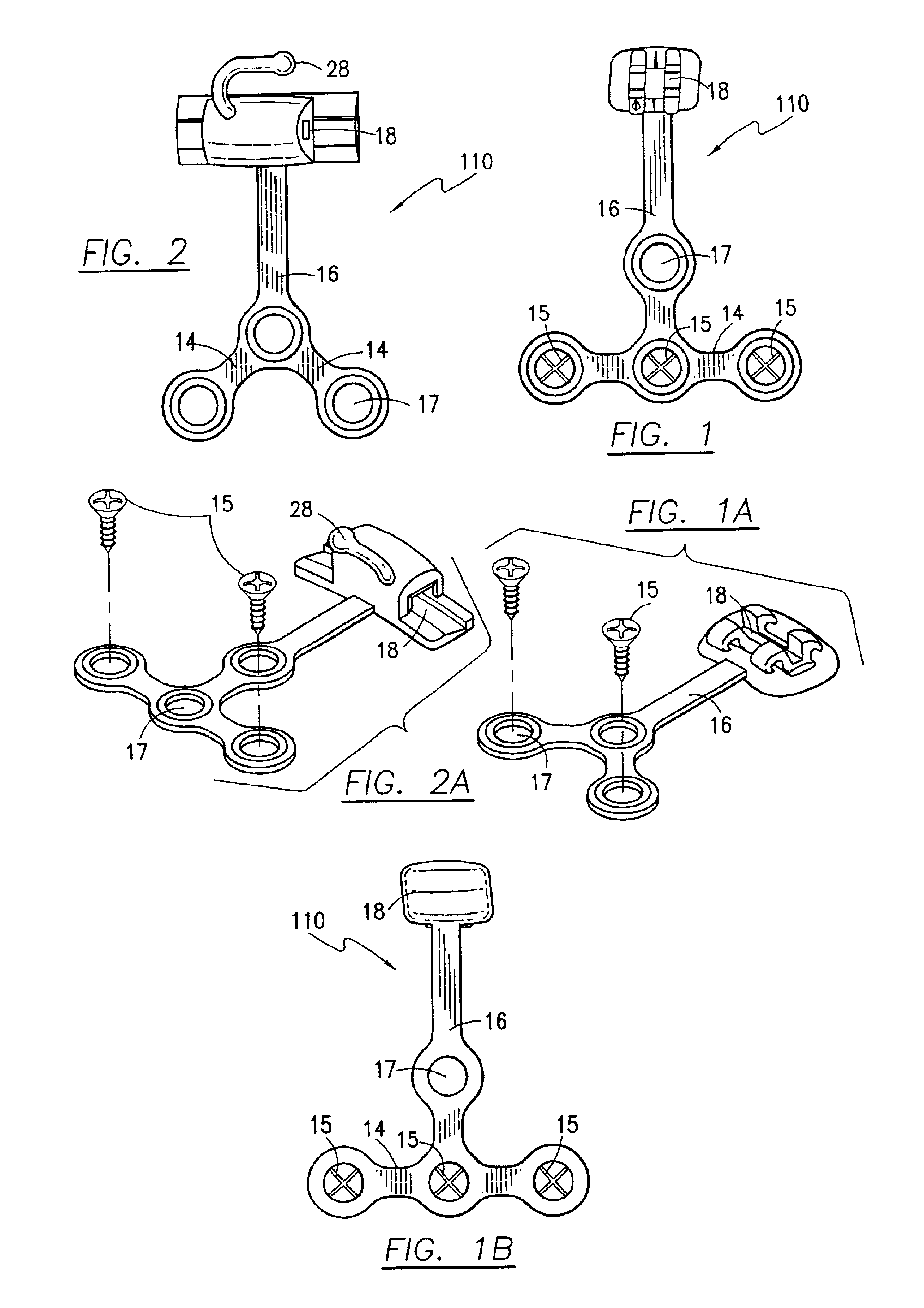Skeletal transmucosal orthodontic plate and method
a transmucosal and orthodontic plate technology, applied in the field of orthodontic bone anchorage, can solve the problems of missing teeth or teeth to be used as anchorages, significant time-consuming, and undesirable movement of anchorages
- Summary
- Abstract
- Description
- Claims
- Application Information
AI Technical Summary
Benefits of technology
Problems solved by technology
Method used
Image
Examples
Embodiment Construction
Referring now to the drawings, and in particular to FIG. 1, guide anchor plate 110 is shown having a bendable, malleable, substantially thin, planar base 14 shown in the form of a T-shaped body. Anchor plate 110 comprises an elongated straight body central member 16 which, after installation, protrudes through the soft tissues of the gum substantially adjacent a lateral side of the dentition as shown in FIG. 6. The anchor body base 14 unitarily formed at one end of central member 16 includes one or more apertures / openings 17 (preferably at least two) extending through the base 14 and adapted to receive one or more fasteners 15, preferably screws, the heads of which will be flush with the top surface of the base 14. The base 14 and central member 16 are bendable to conform to bone contour to directionally fit a desired space. The fasteners 15 situated within the openings 17 anchor the base 14 against the bone, either mandible or maxilla, such that the base 14 lies firmly flush, prefe...
PUM
 Login to View More
Login to View More Abstract
Description
Claims
Application Information
 Login to View More
Login to View More - R&D
- Intellectual Property
- Life Sciences
- Materials
- Tech Scout
- Unparalleled Data Quality
- Higher Quality Content
- 60% Fewer Hallucinations
Browse by: Latest US Patents, China's latest patents, Technical Efficacy Thesaurus, Application Domain, Technology Topic, Popular Technical Reports.
© 2025 PatSnap. All rights reserved.Legal|Privacy policy|Modern Slavery Act Transparency Statement|Sitemap|About US| Contact US: help@patsnap.com



